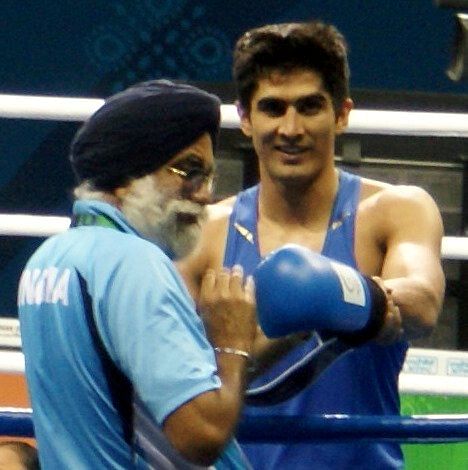
Indian boxers excelling but lot more required: Chief coach Sandhu
New Delhi, July 20: A record eight boxers qualifying for the London Olympics is a clear indicator of the phenomenal growth of the sport in India, with the pugilists taking the country to new heights, but a lot more needs to be done, particularly at the grassroots level, to become a world power, chief coach Gurbaksh Singh Sandhu says.
“I have been a coach since 1993 and it’s been a gradual improvement for Indian boxing. No one gave boxing a chance or took note of it at the earlier Olympics. The sport has grown because of the hard work of the boys and the coaching staff, who for years have worked tirelessly,” Sandhu told IANS in an interview.
Sandhu, who announced that he is quitting as the national coach on his return from London, however, feels that a lot more still to be done, especially at the grassroots level, if India has to dominate the sport.
Seven male boxers – Devendro Singh, Shiva Thapa, Jai Bhagwan, Manoj Kumar, Vikas Krishan Yadav, Vijender Singh and Sumit Sangwan – and one female, Mary Kom, are in London preparing for the July 27-August 12 Games and the expectations are that they will come back with more than one medal.
“But there is still a long way to go. We need systematic training. If we are to become a world power, a lot has to be improved at the grass-roots level. We also need good coaches at lower levels, to start with in the districts.”
Sandhu says the story of Indian boxing has been a rough one. It all started with Hawa Singh giving India its first medal at the 1966 Asian Games by winning gold and then repeating the feat again at Bangkok four years later.
Boxing came to prominence when Vijender Singh won a bronze in the 2006 Asian Games. That was the turning point for Indian boxing and it never looked back.
Vijender then did the unthinkable by winning a bronze at the Beijing Olympics, thrashing Ecuador’s Carlos Gongora of 9-4 in the quarterfinals to make sure of a podium finish and becoming the first Indian boxer to win an Olympic medal.
“In the last four years, Indian boxing has changed dramatically. Vijender’s medal in Beijing brought about a sea-change in the boxing scene. Suddenly, people cared about what we have been doing.
“Since then the facilities have got a lot better, there is more foreign exposure for the boys now. The whole outlook has changed,” said Sandhu.
The golden period for Indian boxing had commenced. The biggest show of strength came in the 2010 Guangzhou Asian Games, where India finished second behind China in the boxing medal table, winning an unprecedented nine medals – two gold, three silvers and four bronzes.
This was India’s best performance at the regional Games, catapulting the country to the sixth spot in the overall medals chart.
However, the 59-year-old Sandhu is still not content and feels just qualifying is not enough and will only be satisfied if the seven-strong men’s contingent goes on to improve upon the one bronze performance at the Olympics.
“Our boxers should do really well on current form. Just qualifying doesn’t make me or my boxers happy. We will only be satisfied if we get medals.” “I am very optimistic about getting a medal from each weight class,” he said.
As for the future, with youngsters like Devendro, Vikas Krishnan and Manoj still in their formative years, it looks bright for India.
(Santosh Rao can be contacted at santosh.r@ians.in)